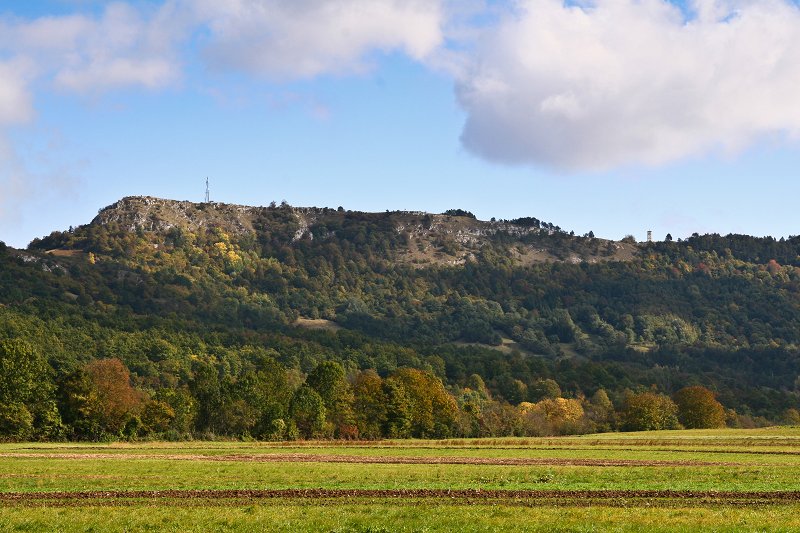IN THE LAND OF PREHISTORIC SITES

Date: 26 September 2022
Explore prehistoric sites whose construction is still shrouded in mystery.
On a bicycle, get to know the famous sites of the Comenius circle and the extraordinary cultural heritage of the people who lived here 2500 years before Christ. One of the most picturesque and explored is Debela Griža near Volčje Grad.
Next is the village of Zagrajec and the archaeological site of Brith, the village of Sveto near Komnu and the archaeological site of Martinišče, then Temnica and the archaeological site of Sveti Ambrož, Škrbina and the archaeological site of Lipovnik and Branik and Rihemberk Castle.
All these fortifications with dry stone walls were built on specially adapted natural hills, which followed each other at a distance of three to four kilometers, thus forming a unique cultural landscape. The construction sites are the most powerful witness of the pre-Roman past of our places. Their culture, which lasted more than a thousand years, ended with the Roman conquest.
The Komen circuit is almost 62 kilometers long and is suitable for cyclists who already have some skills and knowledge.
Tip - at Štanjel Castle, in one of the oldest and most beautiful Karst villages, treat yourself to prehistoric minestrone, served in an authentic prehistoric bowl. It illustrates the actual dish that was eaten during the existence of construction sites. Also ask for fruit wine spikes, according to archaeological findings, wine was grown in the Karst long before the arrival of the Romans.
Archeology lovers should not forget the exciting fact that traces of Celts, Illyrians, Japods, Veneti, and Histrians flow through this area of prehistoric sites. Their surprising density is also interesting - as many as 550 of them are found in the wider area of Karst, Brkinov, Čičarija, Istria, and Kvarner, which is clear evidence of the common history and unity of this area during the Bronze and Iron Ages.
At the time when the pyramids were being built in Egypt, dry stone walls were being created on the Karst, and the area of Slovenia was then, precisely because of the fortifications, the cultural center of this part of Europe, in terms of metallurgy, construction and settlement.
Length: 61.6 km
Ascent: 980 m
Descent: 980 m
Route type: circular
The difficulty of the route: Demanding
Maybe you didn't know?
- Over 1,000 inhabitants lived in individual castles, which were formed into extremely well-organized communities. The latter controlled their territorial area, traded over long distances, and thus formed their own customs and rituals, which relate in particular to the rites of burials, births, initiations, weddings, and also the resolution of disputes.
- in the area between Karst and Lošinj, more than 3,500 spontaneous, wild plants still thrive today, which is an extraordinary variety. Charred macro botanical remains from soundings in the construction sites testify to the extraordinary connection of the inhabitants of the construction sites with plants. Namely, they were presented with raw materials for building materials, tools, weapons, food, clothing, medicines, spices, and contact with a spiritual ritual.
- Due to the biggest fire in the history of Slovenia, part of the area of the prehistoric forts has been transformed into a semi-wartime landscape. A clear border between the green karst and the stony desert is visible, where due to the fire, caves and trenches from the time of World War 1, which marked the Karst forever, were newly revealed. As many as 8 military cemeteries are located in this area, the largest of which is located in the village of Gorjansko, where between 10,000 and 14,000 soldiers of the Austro-Hungarian army of all nationalities are buried.
- In the area of the Karst, do not miss the stone shepherd's houses, which once protected shepherds from storms, heat, and rain. They are real masterpieces, built only from raw stone, without mortar, but still have solid walls and roofs. The oldest is more than 150 years old. Similar dry-stone houses were also built elsewhere in Europe, especially in the Mediterranean, where there was a lot of stone in nature. In 2018, the skill of drywall construction was entered on the UNESCO Representative List of the Intangible Cultural Heritage of Humanity.
 Our stories
Our stories